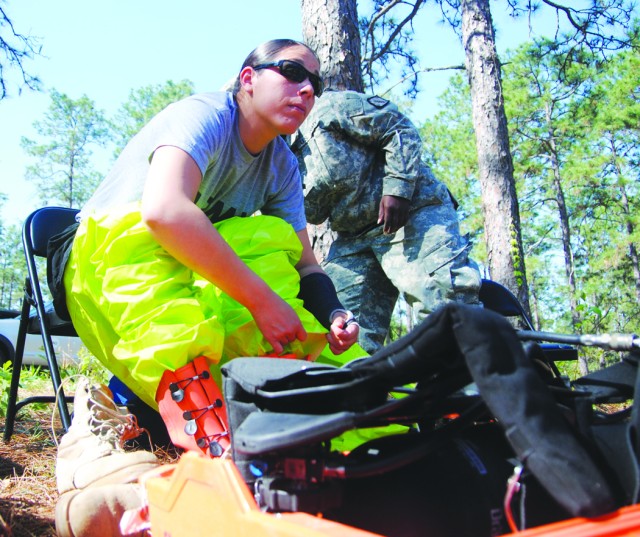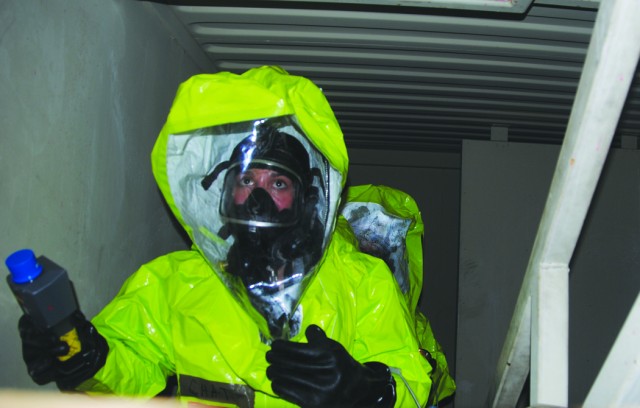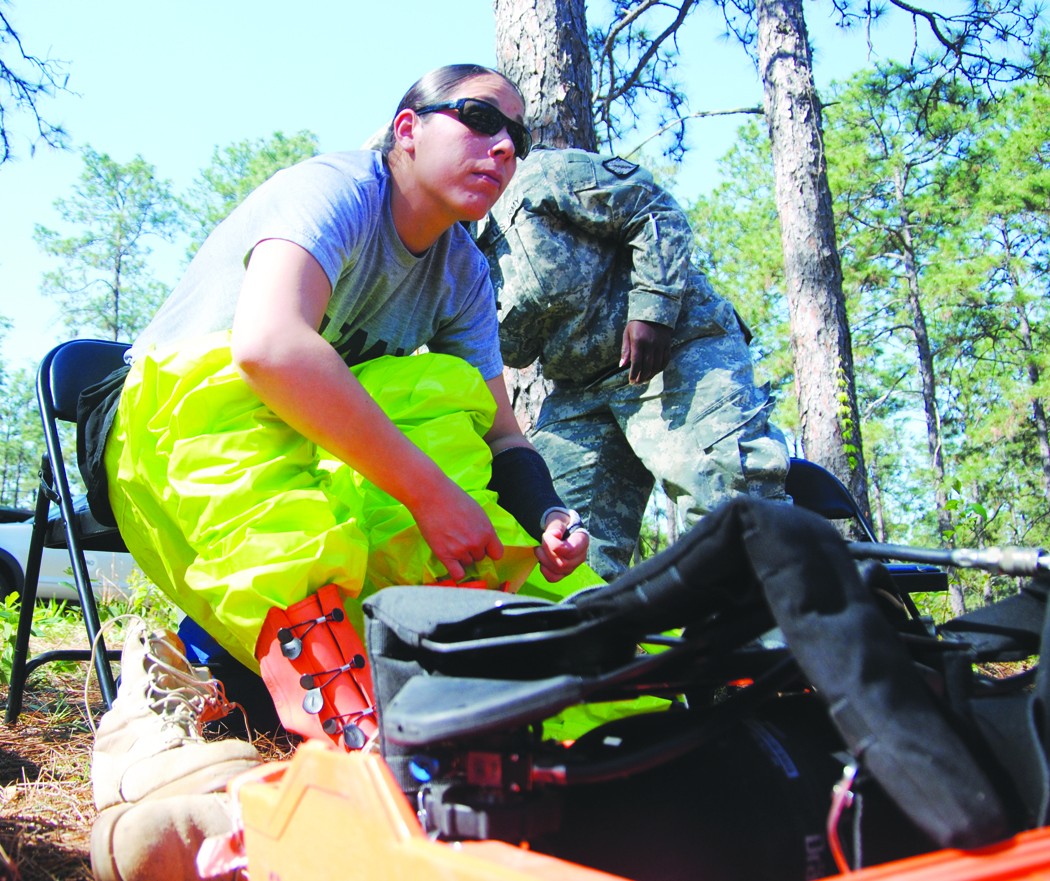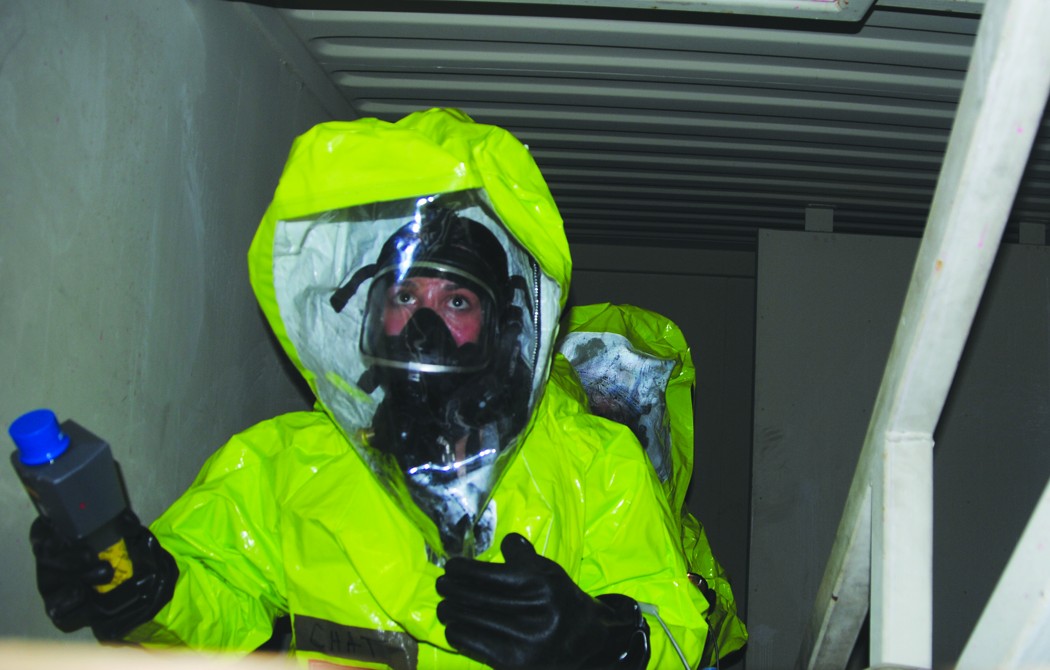FORTAca,!E+POLK, La. - A police patrol in Houston enters a building where they've seen a suspicious person enter and are nearly overcome by a foreign substance they can't identify. Who do they call'
A tornado rips through a Sterlington, La., plant, releasing dangerous chemicals into the area. Who gets the call'
A hurricane blows through Mobile, Ala., leaving death and destruction in its wake. Where does the local government turn'
Thanks to a new military program, Defense Support of Civilian Authorities (DSCA), the call could go out to the 83rd Chemical Battalion's Hazardous Response Platoon on Fort Polk.
"This is a new asset for the 83rd," said 1st Lt. Desiree Giangregorio, platoon leader for the HRP. "It's for use both stateside and down range, in the event of natural disasters, IEDs (improvised explosive devices) or WMAs (weapons of mass destruction."
Giangregorio said her platoon's mission is to collect and identify samples from the scene and make the hazardous material safe for movement. The HRP conducted a training exercise April 11-13 testing their ability to complete a mission with the new equipment they've received.
Mario Billingsley, president of Steel Group, led the instructional team that came to Fort Polk to train the HRP.
He said his company trains all branches of the military to handle chemical, biological, radiological, nuclear and other explosive devices.
"It's a pretty new field," Billingsley said. "The events of 9-11 were big, but the real reason this type of unit was created came out of Hurricane Katrina - that was the turning point."
Billingsley said that during the storm that ravaged New Orleans, Biloxi and the Gulf Coast in 2005, it became apparent that some disasters were too big for local National Guard units to handle.
"Homeland Security had to send in active duty Soldiers," Billingsley said.
"This program was set up so that when civilian authorities have exhausted their assets, DSCA is available to help the on-site incident commander. The HRP becomes the point of the spear."
Billingsley said it was only natural that the Army led the way in the new program.
"The Army has the biggest resource tool," he said.
Giangregorio said she learned of the new mission last fall.
"We actually began training March 14," she said. "This is our first exercise with our new equipment."
The exercise, held at Fort Polk's Rosepine 2 training area, tested the platoon's ability to identify hazardous material in a building and prepare it for safe removal.
Pfc. Maria Chatfield and Staff Sgt. Steven Kitchen comprised the recon team that first entered the building, dressed in bright yellow protective gear and wearing air tanks.
As they worked their way around the building, they were faced with booby traps set up to deny them entrance. After successfully negotiating the traps, they entered the building and began a systematic search, looking for hazardous materials.
"It was hot," Chatfield said, as she had her vital signs checked by a medic after completing the inspection of the building. "You get really disoriented inside the building because it is so dark and the face shield on your protective clothing fogs up."
Chatfield said she was pleased with the way her team performed.
"We've learned a lot the last couple of days," Chatfield said. "We've picked up on what we're supposed to do or not do. It's been great training."
Giangregorio said the exercise has been beneficial for her and the Soldiers in the HRP.
"I am a lot more competent and comfortable with knowing the mission and what's expected of us," she said.
"Monday (April 11) was tough, but the instructors were excellent and walked us through the difficult parts. We came together Tuesday (April 12) and today (April 13) was awesome. I'm happy."
Sgt. 1st Class Daniel Fifield, the HRP platoon sergeant, agreed with Giangregorio.
"We're at a point where I'm confident we can go down range and accomplish any mission we're given," Fifield said.
"The platoon works together well and we're fortunate to have the team and leadership we have in place."
Billingsley said he was impressed with the strides made by the platoon during the exercise.
"They are the best HRP - and best trained HRP - in the Army," he said.




Social Sharing